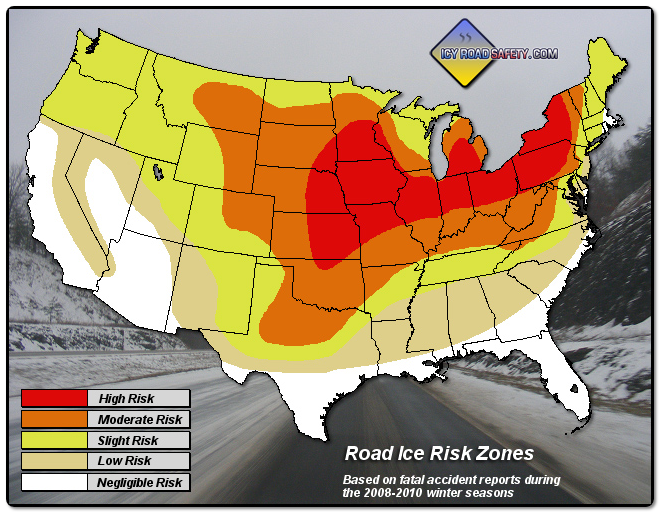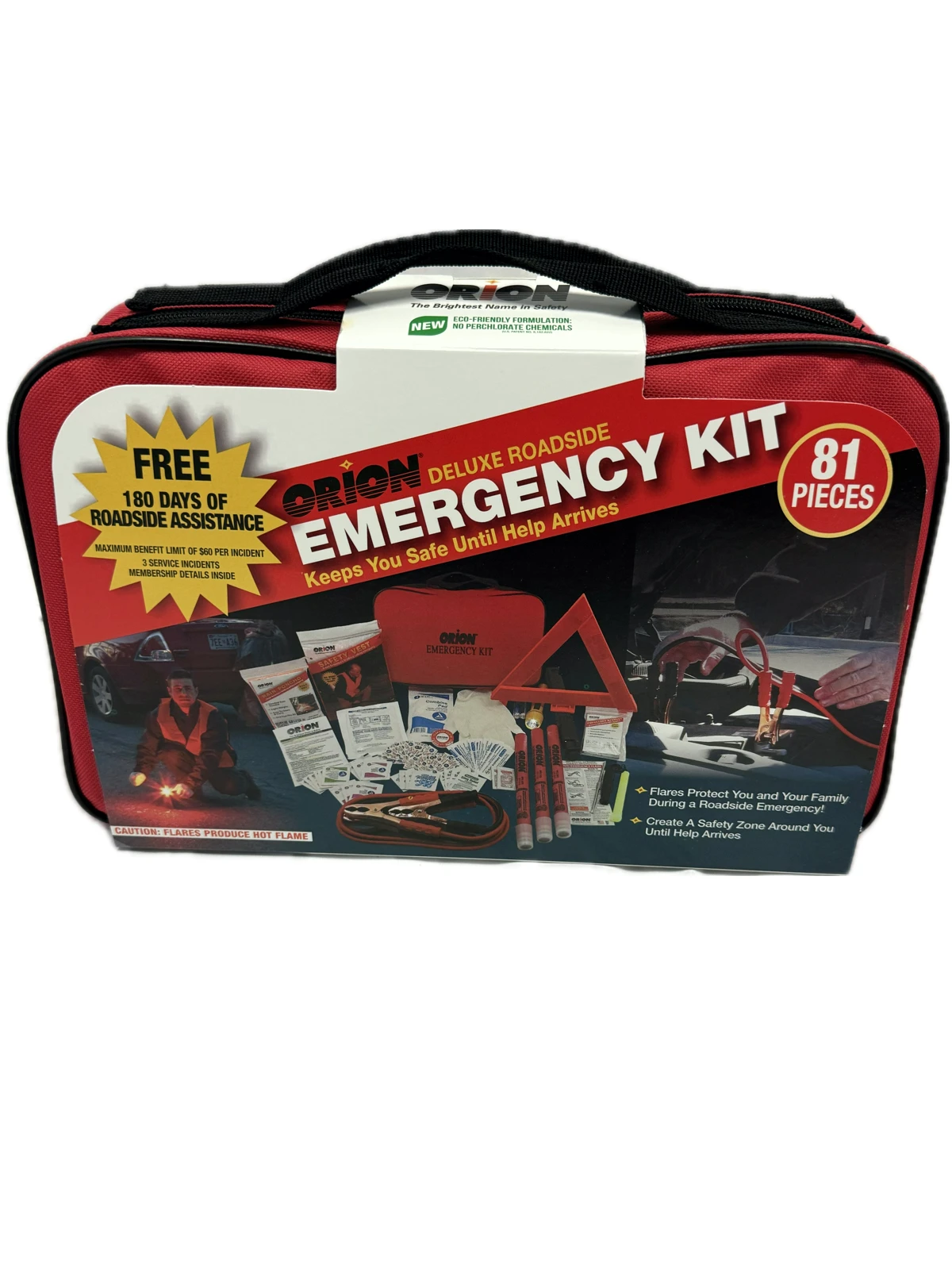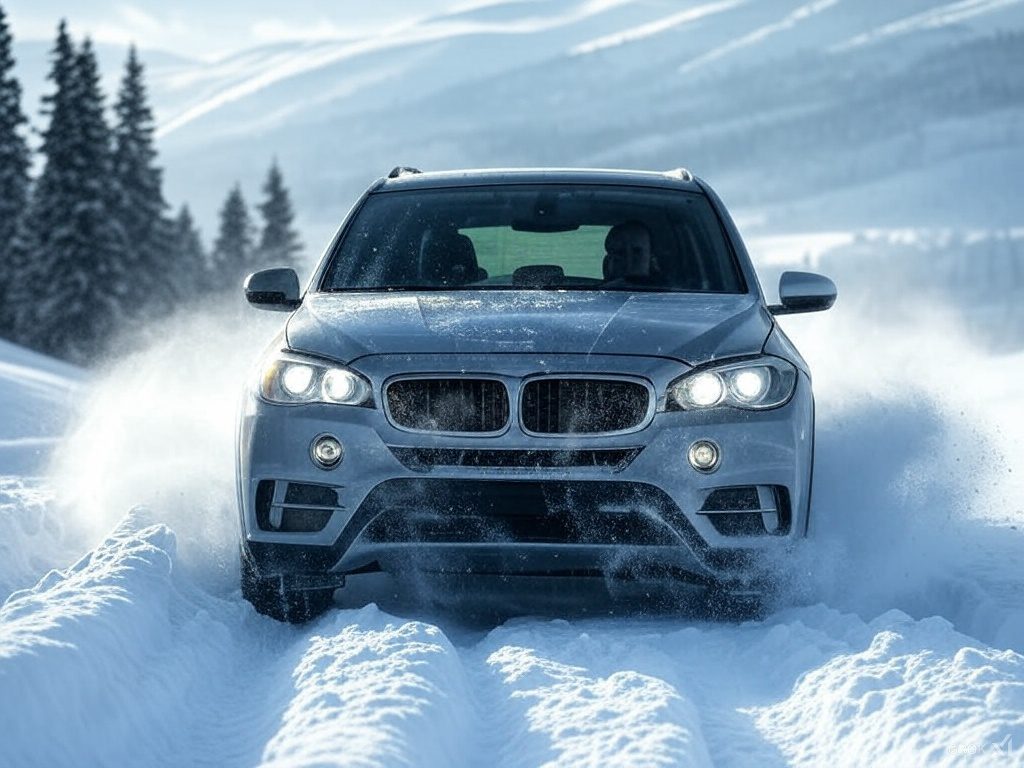7 Tips to Drive Safely on Icy Roads This Winter

1. Keep an Eye on Temperature Fluctuations
Stay updated on local weather forecasts, especially when temperatures approach 32°F. Rapid temperature swings—such as a brief thaw followed by a sudden freeze—are prime conditions for ice to form overnight or even within hours. Weather apps and alert systems can help you anticipate slippery conditions so you can plan your drive accordingly. Equipping your vehicle with an emergency kit is essential. Consider storing items like:- Non-perishable snacks and bottled water
- Warm blankets and extra clothing
- A flashlight with extra batteries
- Orion Road Flares
- High-visibility workwear
- Reflective warning triangles
2. Understand Where and When Ice Forms
Ice dramatically reduces tire traction, often catching drivers off-guard because it’s difficult to see until it’s too late. Keep a safe following distance—at least double the usual space you’d maintain in dry conditions. Areas most prone to icing include:- Low-lying spots that collect water
- Curves in the road where water can pool
- Construction zones with uneven terrain or water runoff
3. Watch Out for Black Ice
Perhaps the most notorious winter driving hazard is black ice—thin, transparent layers of ice that blend seamlessly into the pavement. It can form when melting snow refreezes faster than road salts can melt it, or when freezing rain coats the pavement. When black ice is possible, reduce your speed significantly. Look for subtle cues: a seemingly wet patch that doesn’t reflect much light could be black ice. If you suspect you’ve encountered black ice, avoid sudden braking or steering changes; instead, ease off the gas and steer gently to maintain control.4. Choose Your Route Carefully
Some roads are inherently riskier than others during winter. Steer clear of those that are rarely maintained or become especially hazardous after precipitation. Consider the following when mapping your drive:- Check maintenance schedules: Know which roads are plowed or salted first in your area.
- Avoid unpaved backroads: These can quickly turn into sheets of ice when not treated.
- Bridges and overpasses: They freeze faster because cold air circulates above and below the roadway.
5. Master Essential Winter-Driving Tactics
Adopting safer driving habits for winter is the best way to avoid accidents. Follow these proven techniques:- Increase your following distance: Ice extends stopping distances significantly.
- Accelerate and brake gently: Sudden, forceful actions can cause a skid. Ease into stops and starts.
- Maintain momentum: Minimizing unnecessary stops can help you avoid traction issues when you start moving again.
- Understand your car’s braking system: If you have ABS (Anti-lock Braking System), apply steady pressure. If not, pump the brakes gently to avoid lockup.
6. Prepare Your Vehicle for Winter Conditions
A well-maintained vehicle is critical for safe winter driving. Along with the emergency kit, pay attention to these often-overlooked details:- Tire Choice: Winter or all-season tires offer better grip, with deeper treads designed to channel away snow and slush.
- Tire Pressure: Cold weather causes tire pressure to drop; check it regularly to maintain proper handling.
- Wiper Blades and Fluid: Keep them in good shape, and use winter-grade washer fluid to prevent freezing.
- Fluids and Battery: Coolant, oil, and battery condition can all affect performance. Low temperatures can reduce battery power by up to 50%.
- Clear Windows and Lights: Remove snow and ice from all windows, mirrors, and headlights for maximum visibility.
Pro Tip: Carry a bag of sand, cat litter, or traction mats in your trunk. If you get stuck on ice, placing these under your drive wheels can help you regain traction.
7. Practice Skid Recovery Skills
Even the most careful drivers can skid on ice. Prepare yourself by learning to recover quickly:- Stay Calm: Panic leads to overcorrection. Keep a steady grip on the wheel.
- Steer in the Direction of the Skid: Turn your steering wheel slightly in the same direction your rear end is moving to realign your vehicle.
- Ease Off the Gas: Sudden acceleration or braking can worsen the skid. Instead, gently remove your foot from the accelerator.
- Apply Light Braking (if needed): In vehicles without ABS, pump the brake gently instead of slamming it.
Arrive Safely This Winter
Driving on icy roads is a reality for many people during the colder months, but it doesn’t have to be dangerous if you approach it with the right knowledge and preparation. By monitoring temperatures, understanding ice formation, choosing well-maintained routes, and fine-tuning your driving techniques, you can mitigate risks and help ensure a safe arrival. Remember, a few extra precautions—like winterizing your car, stocking an car emergency kit, and practicing skid recovery—can make a world of difference. New Drivers should take extra care, winter driving takes practive. Stay vigilant, stay calm, and let these tips guide you toward a safer winter driving season.Order your Traffic Cones Today! Call us at 800-429-9030.
When can you get your drivers License by State- How old for Permit and License?
Orion Deluxe Roadside Emergency Kit
Orion Deluxe Roadside Emergency Kit
Quick Facts:
- Don't get caught broken down on the side of the road without our 81 piece breakdown kit
- Contains (to just name a few..) Flares & road triangle, Flashlight, Lightstick, Emergency Blanket, Safety Vest, Jumper Cables & more (see complete list below)

Orion Flare Kit Plus Emergency Kit
Orion Flare Kit Plus Emergency Kit
Quick Facts:
- High-Visibility Emergency Signaling – Includes Five (5) premium Orion 20 Minute safety flares for reliable alerts in any weather or lighting conditions.
- Safety Vest for added Visibility - For personal protection when deploying safety flares
- Comprehensive Roadside Essentials – Features a first aid kit, 8' jumper cables, lightstick, and other critical tools for unexpected emergencies.
- Durable & Compact Design – Weatherproof kit with a sturdy, portable case for easy storage and accessibility in any vehicle. Measures 12 1/4" x 8 1/4" x 4"

Triangle Reflector Warning Kit
Easily deployed and stored, these florescent triangle emergency road flares are designed to meet or exceed all DOT and FMVSS 125 standards. Acrylic plastic strip reflectors have a permanent seal against dust and moisture damage. Ballasted, blow molded tube with non-slip foam pads provides a study base. Wire controlled tilting. Holds up to storms and extreme winds. Bright red carrying case with handle included.
Quick Facts:
- Meets DOT FMVSS 125 Standards
- Kit includes Three (3) Reflective Triangle in a Carrying Case
- Carrying case measures 18" Long x 5" Wide x 4 1/2" Tall and approx. 10 lbs.

